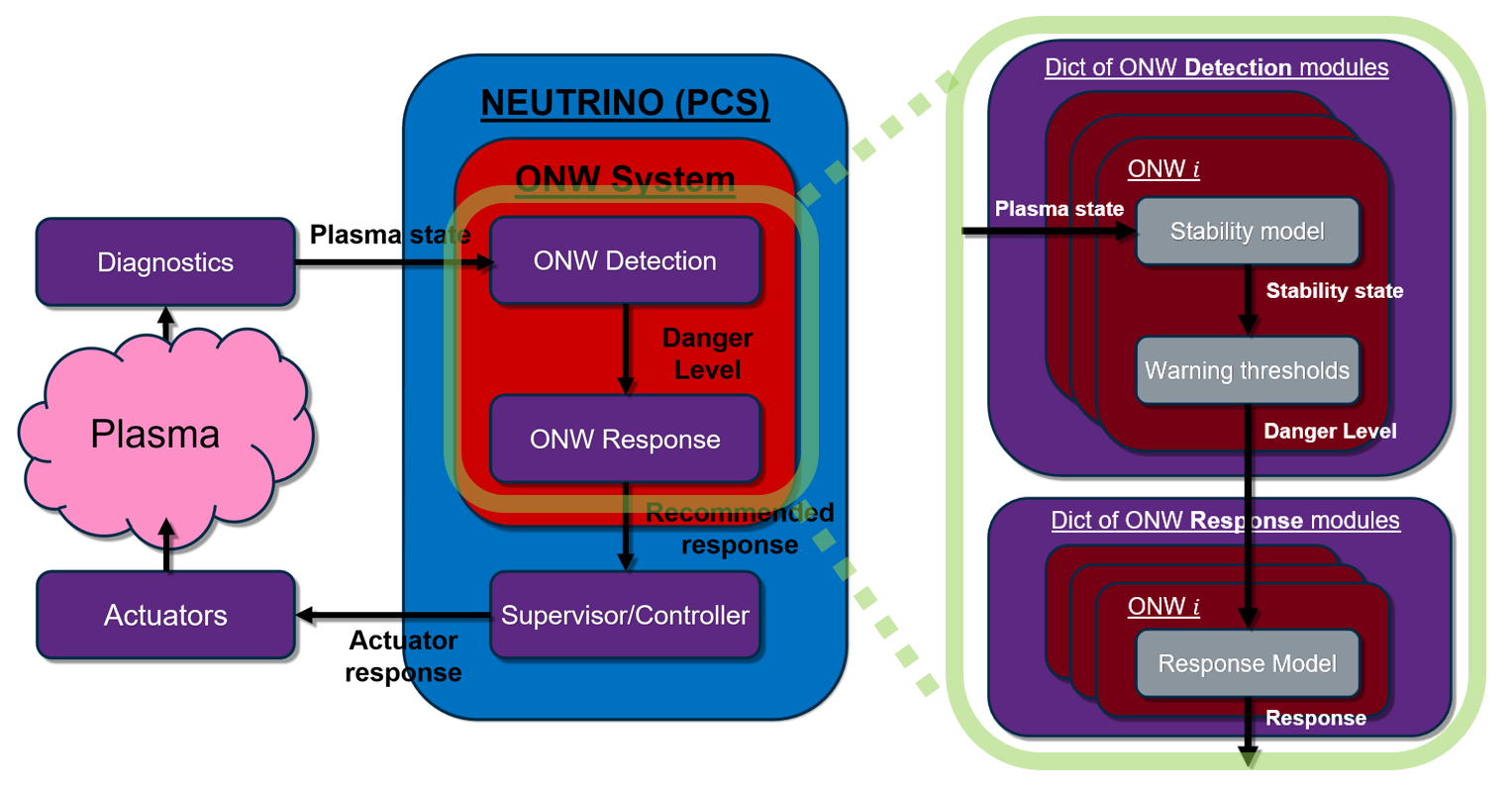
SPARC will be a next generation tokamak designed to achieve high-performance up to a fusion gain of 11. While this pushes fusion closer to reactor-relevant operation, the expected stored energies bring with it a stricter need to address the dangers of disruptions. The small budget SPARC has for allowable disruptions (mitigated or otherwise) requires that avoidance measures be in place, starting as early as day 1 of operation. This provides new challenges, as disruption warning systems on existing machines have historically been developed empirically, building off of a large database of discharges from their respective devices. The aim of this project is to have a warning system ready on day 1 that can easily be tuned and improved as new data comes in. Warning thresholds will be developed using both physics-based and data-driven methods, and the responses to crossing these thresholds will include equilibrium steering, “soft-landing” ramp-downs, and triggering the Disruption Mitigation System.
Testing of this system and the calibration of the physics-based thresholds is being done in collaboration with the CFS team on MOSAIC, a pulse-planning and pulse-simulating framework that mimics SPARC and its Plasma Control System (PCS). Off-Normal Events (ONEs) can be injected into MOSAIC pulses to generate large datasets of simulated disruptive and non-disruptive scenarios. Thresholds for the detection of these events can then be developed using these large simulated datasets, and optimal observes can be identified. An entire library of ONEs is being developed that covers the most common causes of disruptions expected for SPARC, with unique Injection, Detection, and Response modules being coded for each. Once finished, the Detection and Response modules will be ported over to the SPARC PCS (NEUTRINO) and make up the Off-Normal Warning system.
The PSFC Disruptions team is also collaborating with the Swiss Federal Institute of Technology Lausanne (EPFL-SPC) to incorporate DEFUSE (A. Pau et al, 2023 IAEA FEC, IAEA-CN-316-2057), a multi-machine disruption event characterization framework, into the calibration workflow. This framework can scan through the simulated data provided by MOSAIC, making it an easy platform to determine relevant thresholds for off-normal detection. In addition, the thresholds calculated from this SPARC simulated data can be validated against those found scanning through the multi-machine database contained within DEFUSE.
The ONW/ONE team is led by postdoctoral associate Alex Saperstein, with the close collaboration of Ryan Sweeney, Devon Battaglia, and Dan Boyer at Commonwealth Fusion Systems (CFS); and Alessandro Pau at EPFL-SPC. Alex’s supervisor is Dr. Cristina Rea.